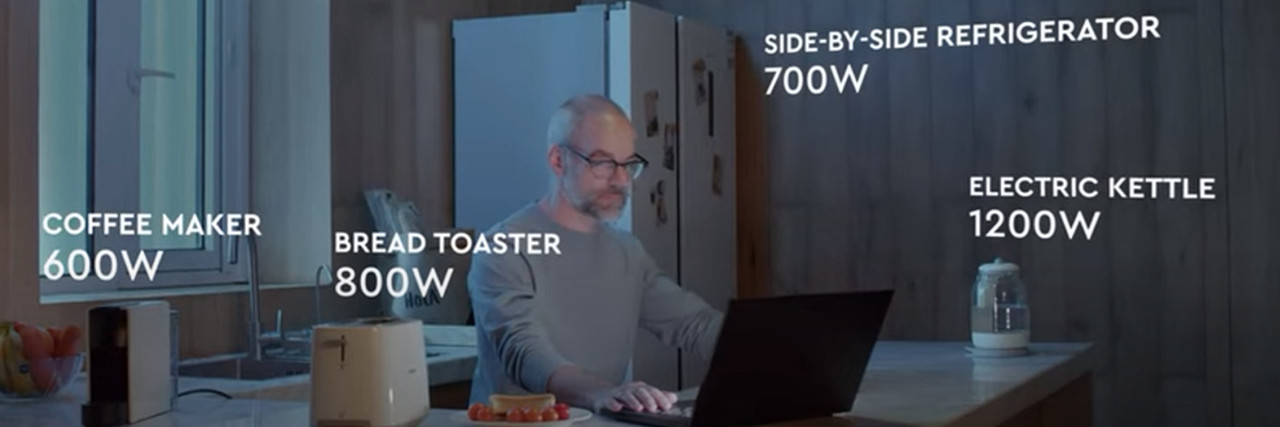An In-Depth Guide: How Many Watts Does a Refrigerator Use?
This is an important question to consider if you're thinking about using solar power in your home or fitting a refrigerator in your RV or mobile home. You may even wonder how much it is if you're trying to use less energy, save money, and become more eco-conscious.
In this guide, we'll discuss the wattage used by standard refrigerators and provide tips on reducing the amount of electricity they consume, as well as everything you need to know to manage your solar system and electronic setup.
Let's get into it.
Table of contents:
- How many watts does my refrigerator use?
- How many kWh does my refrigerator use per day?
- What Affects Fridge Power Use?
- Ways to cut my fridge power consumption
- A comparison of average electricity consumption of typical household appliances
- What size solar generator do you need to run a refrigerator?
- Final Words
How many watts does my refrigerator use?
A Refrigerator works on a power rate between 350 and 780 watts. To find out the wattage of your refrigerator, all you need to do is to look at the sticker located inside the door. This can be found on mini-fridges as well.
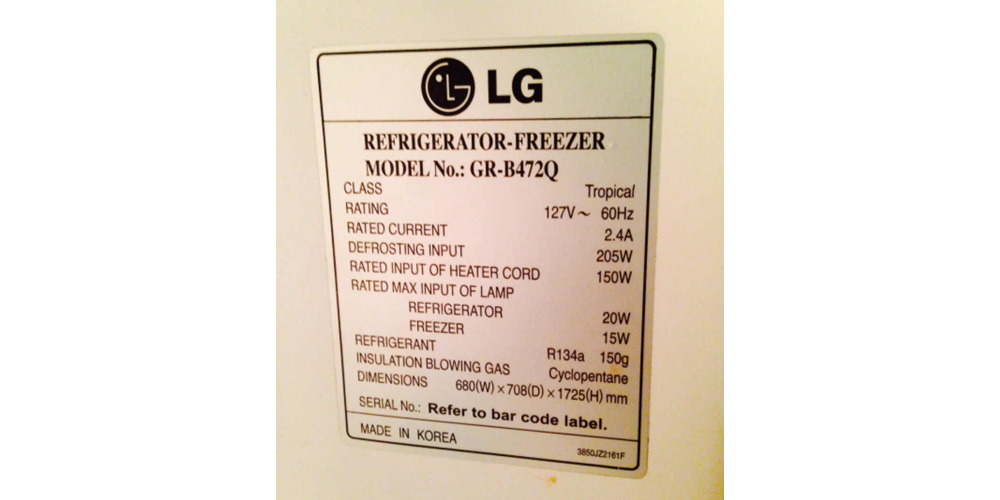
Source:diy.stackchange
As you can see, this fridge has a rating of 127 volts with a rated current of 2.4A.
Multiply these together, and you get 305 watts. However, note that this is only when the compressor is running and will only run when the temperature needs to be called. Therefore, it may be active anywhere between 25% - 50% of the time.
Let’s assume that your refrigerator runs an average of 35% of the time, which is a rule of thumb. Take your total wattage and divide it by three; you’ll have a rough estimate of how much power it uses per day.
So, 305 watts divided by 3 is 102 watts. The average power your refrigerator uses per day is 102 watts.
With this calculation in mind, we can estimate a list of average watts per day for household refrigerators in terms of their sizes:
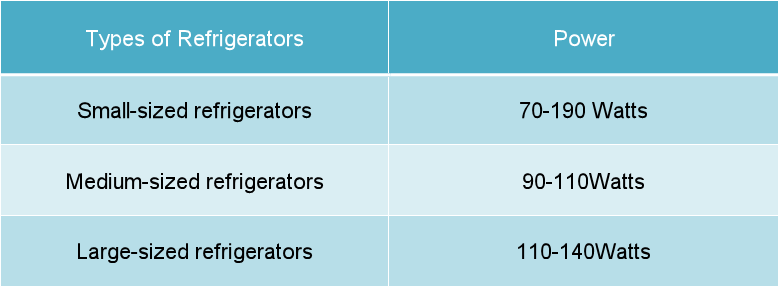
How many kWh does my refrigerator use per day?
The easiest way to know the energy consumption of your refrigerator is checking out the energy guide that comes with the refrigerator.
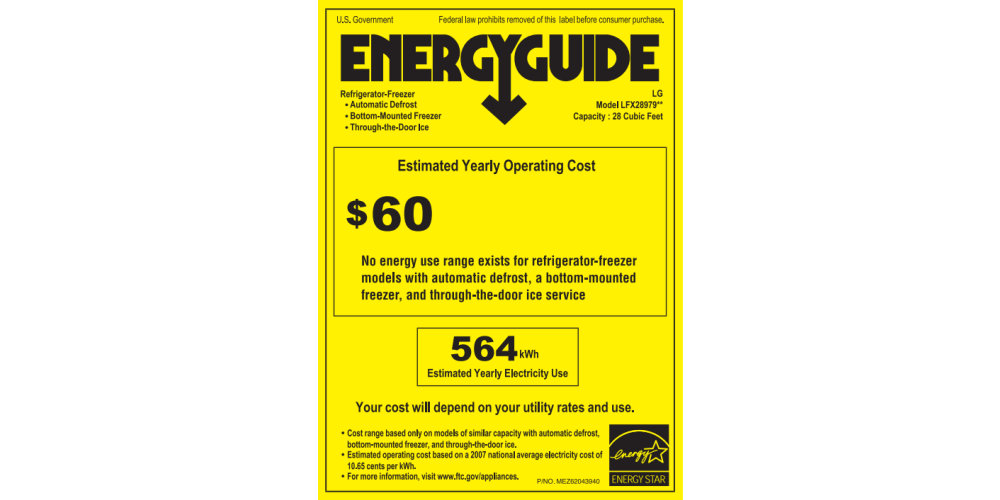
Source: LG
Energy guide is a mandatory label in the US. On the label, you can easily find out the estimated yearly electricity use as well as the estimated yearly operating cost.
If you want to do the math on your own, it is also a piece of cake. As your refrigerator has to keep running for 24 hours to keep your food fresh, then we can multiply the average watts of the refrigerator by 24 to get the result.
Consume that your refrigerator runs 102 watts per day, here is the formula:
102 watts x 24 hours = 2448 Wh
2448Wh ÷ 1000 = 2.448 kWh
Therefore,
How many electricity does a refrigerator use per hour?
- It’s about 0.102 kWh;
How many electricity does a refrigerator use per day?
- It’s about 2.4 kWh;
How many electricity does a refrigerator use per month?
- It’s about 72 kWh;
How many electricity does a refrigerator use per year?
- It’s about 876 kWh;
When it comes to calculating the electricity cost, you can multiply the electricity volume by the electricity price in your area. If you set up your refrigerator correctly, maximize your use of energy-saving techniques, have a smaller and more energy-efficient device, and ensure the compressor is only on 20% of the time or less, you're looking at much lower running costs.
Now you might want to know the techniques to save energy, but before that, you need to know what can affect the electricity consumption of a refrigerator.
What Affects Fridge Power Use?
There are so many variables to consider.
- The type of refrigerator: chest freezer, fridge-freezer, or standard fridge.
- The size of the refrigerator: smaller fridges will use less power than larger ones.
- The location of the refrigerator: if your fridge is in a warm place, it will have to work harder to keep food cool, which will use more power.
- The season: in winter, your fridge will use less power as it works to keep food cold in a colder environment.
- The usage: if you open your fridge door frequently, this will increase power consumption.
- The temperature set point: the lower the temperature, the more power your fridge will use.
- The age of the refrigerator: newer refrigerators are usually more energy-efficient than older models.
- The condition of the refrigerator: a well-maintained fridge will use less power than one that is old and not in good condition.
The hotter the room is, the more times the door is opened, and the warmer the goods, the more energy the refrigerator will use. If the fridge is old and has worn parts, this may also reduce efficiency and, therefore, requires more energy usage.
Ways to cut my fridge power consumption

Source: Upslash
Whether your costs are high or low, you can do plenty of things to reduce the amount of power your fridge uses. This will save you money on energy and reduce your energy usage (which is ideal for a solar-powered system), and helps your device run as optimally as possible.
- Set the temperature: the optimum temperature for a fridge is between 3-5°C. Setting your fridge to this temperature will help reduce power consumption.
- Defrost regularly: frost buildup can make your fridge work harder, so be sure to defrost it regularly.
- Keep it full: a full fridge is more energy-efficient than an empty one since there's more space to chill. Try to keep it stocked with food.
- Clean the coils: dust and dirt can build up on the coils of your fridge, making it less efficient. Be sure to clean them regularly.
- Upgrade to a more energy-efficient model: if your fridge is old and not very energy-efficient, consider upgrading to a newer, more efficient model.
A comparison of average electricity consumption of typical household appliances
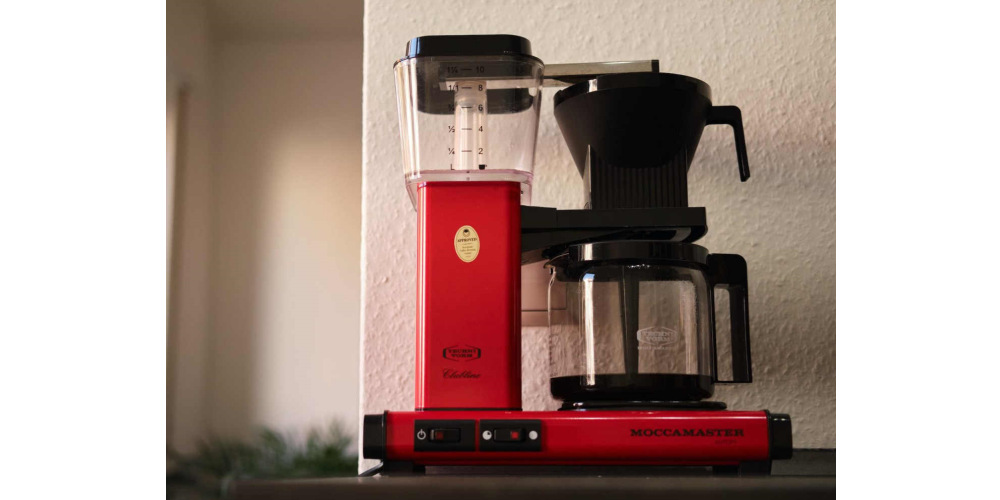
Source: Upslash
Of course, your refrigerator is not the only electrical product in your house or RV. If you're installing a solar power system, you'll need to consider how much energy your system can generate and store and how much all your appliances will use.
To give you an idea of how much energy different electrical appliances use, here is a list of the average power consumption of some everyday household items.
*Note that these are averages and will depend on the appliance's make, model, and age. Check the sticker or instruction manual of your device for the actual figure.
- Clothes washer: 0.7 kWh per load
- Clothes dryer: 4.50 kWh per cycle
- Dishwasher: 1.30 kWh per load
- Microwave: 1.2 kWh per three minutes of use
- Coffee maker: 0.21 kWh per ten minutes of use
- Laptops: 0.05 kWh per hour
- Desktop computers: 0.2 kWh per hour
- Televisions: 0.08 - 0.4 kWh per hour
As you can see, your fridge is not the only appliance that uses electricity in your home. However, it's one of the most power-hungry appliances, so consider its power consumption when installing a solar power system.
What size solar generator do you need to run a refrigerator?
Whether you’re looking to offset your electricity bill or you’re designing a life off-the-grid, or on the road in an RV or camper van, then you’ll want to know what kind of solar powered generator or solar power station you need to keep your refrigerator running optimally.
As we’ve discussed, refrigerators can vary dramatically in their power usage, so you’ll always need to figure out how much energy your fridge uses and then sort your solar generator out accordingly. Or get a fridge that matches your solar generator’s output.
Now, we already know that fridges aren’t run all the time, so this is more like 115W, which means you’ll need around one or two solar panels to keep your fridge going throughout the day.
However, the problem is that you will likely have more electrical devices than just your fridge. This includes appliances like washing machines, freezers, laptops and phones, televisions, etc.
If you’re in an RV, for example, you might end up using one solar panel just your fridge, and this is a considerable waste of portable solar panels for RV, especially when you might only have room for one to three panels max.
Instead, it’s far more beneficial to look into getting a solar power station and power box.
Take the Phoenix 1000 Power Power Station.
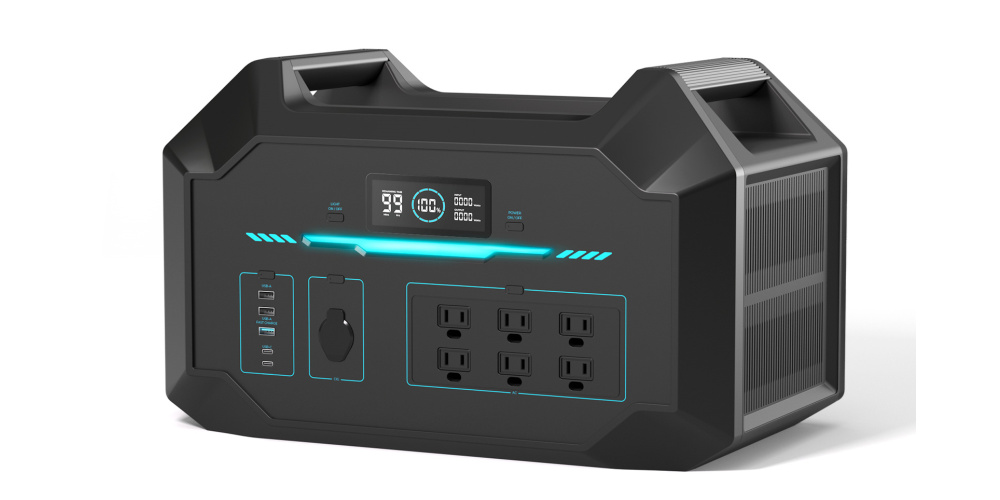
Source: Renogy
This power station delivers up to 2,100W of power to 12 devices simultaneously via its six standard AC outlets, a rated output of 1,500W, and a boost mode. There’s even a special mode that allows it to power devices of up to 3,000W without lag or a drop in performance.
Now compare this to a refrigerator that's directly connected to a solar panel that will only peak at 350W, and you can see why a solar power generator makes life so much easier.
Of course, to keep the power station topped up, you can connect solar panels up to 400W directly, or you can charge the station at a walled AC outlet and go from 0 - 80% full in just under an hour, thanks to the iTurbo charging technology.
This is far more reliable and stable than a traditional solar panel setup, and provides you with a smooth supply of power whenever you need it.
The Phoenix 1000 can keep your refrigerator running on standard mode for up to 25.5 hours on a single charge, but if you’re looking for a solar power station with a bit more kick.
Then the Renogy Lycan 5000 Power Box is well worth a look at.
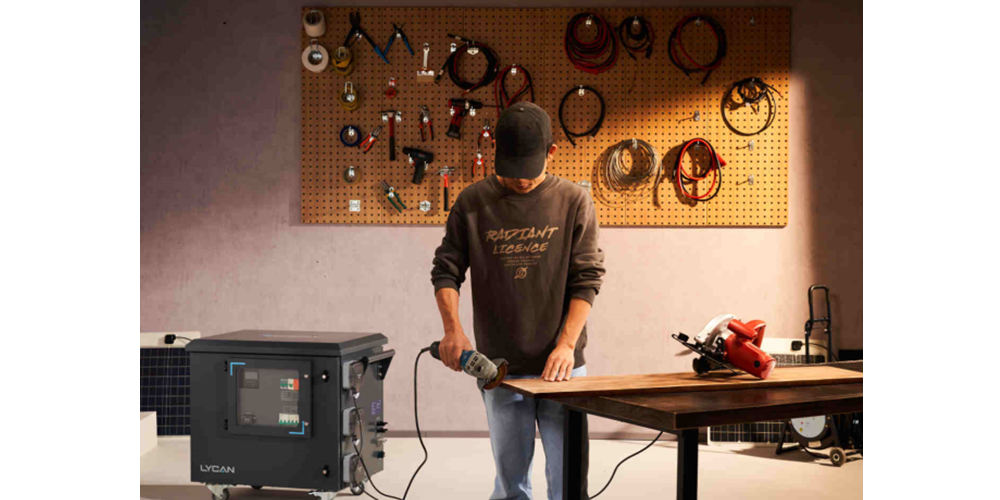
Source: Renogy
This is a 4.8kWh device with a rated output of 120V, meaning it can easily power most heavy-duty appliances in and around your home. Perfect as a backup in case of a power outage or giving some serious juice to your appliances while you’re out and about.
The Lycan can provide a continuous power output of 3,500W, peaking at 7,000W on the boost mode. All this, plus built-in device protections to prevent damage caused by surges or blips, and you can fully charge the station in just 1.3 hours when connecting it to the mains or solar panels (which you can do at the same time).
As you can see, while solar panels are great at offsetting your energy usage or providing your main source of power, using a power station or solar generator is a far better, cleaner, and more effective way to keep your refrigerator running.
Final Words
Setting up a solar power system for refrigeration can significantly reduce your power consumption and save money on your electricity bill. It's also essential if you're looking to live off-grid or on the road.
Thanks to modern solar technology, it's also never been easier to take advantage of it yourself and enjoy a clean and effective solution that works for you.
Solar-powered refrigeration is a great way to reduce your carbon footprint and do your part for the environment. Not to mention, it can also save you a lot of money on your power bill in the long run.
Check out the Lycan 5000 Power Box today and see how easy it is to start solar-powered refrigeration in your home or RV.
Modern solar technology has never been more accessible. Reach out to Renogy for types of solar generators.
Related articles:
Off the grid meaning: Is it possible to live 100% off-grid?- Renogy United States
Different Ways to Attach Rigid, Flexible, & Portable Solar Panels - Renogy United States
48 Volt Systems: The Future of Off-Grid Solar - Renogy United States
What Impact Do Colored Solar Panels Have on Performance? - Renogy United States

